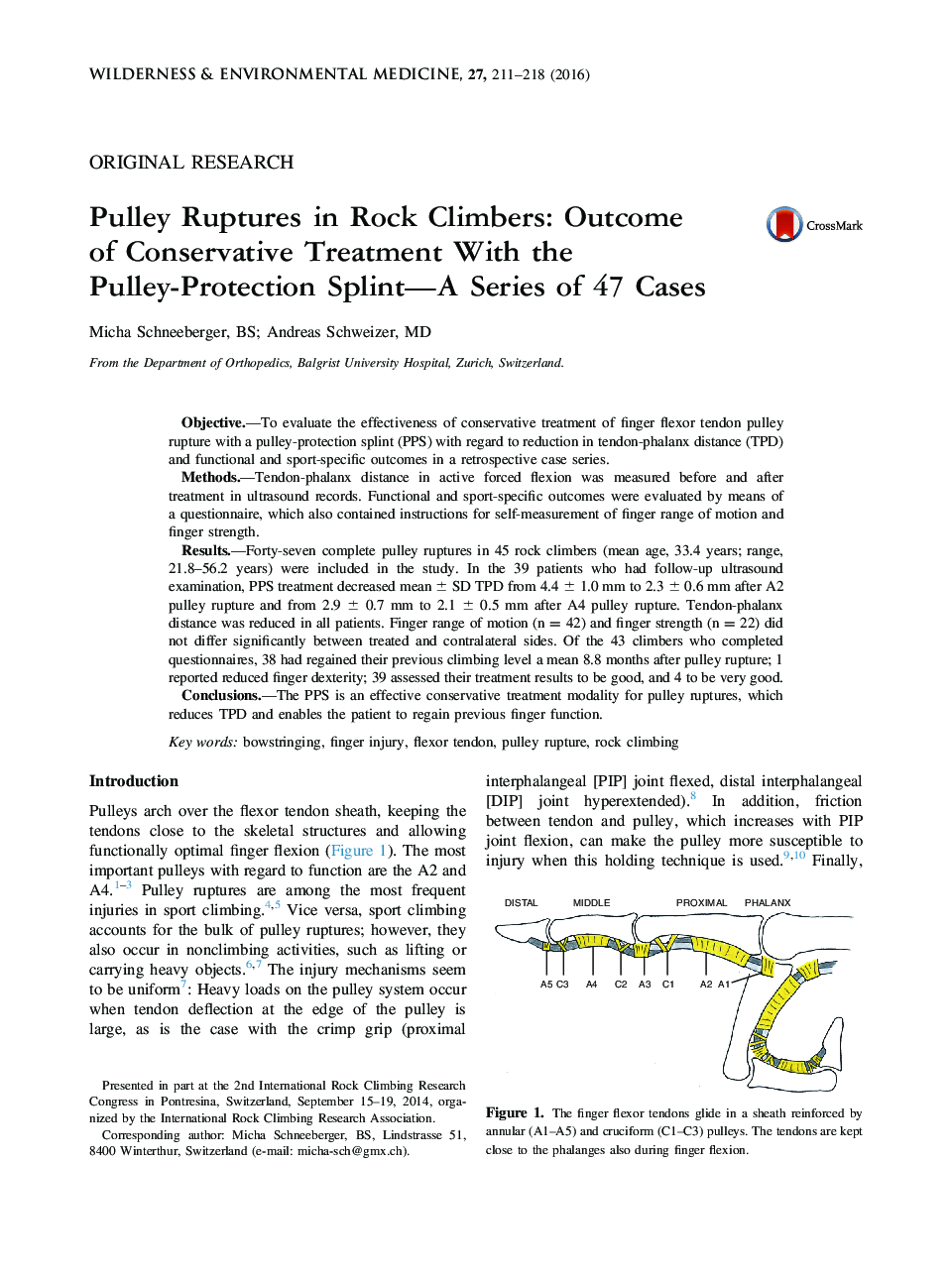| Article ID | Journal | Published Year | Pages | File Type |
|---|---|---|---|---|
| 2615327 | Wilderness & Environmental Medicine | 2016 | 8 Pages |
ObjectiveTo evaluate the effectiveness of conservative treatment of finger flexor tendon pulley rupture with a pulley-protection splint (PPS) with regard to reduction in tendon-phalanx distance (TPD) and functional and sport-specific outcomes in a retrospective case series.MethodsTendon-phalanx distance in active forced flexion was measured before and after treatment in ultrasound records. Functional and sport-specific outcomes were evaluated by means of a questionnaire, which also contained instructions for self-measurement of finger range of motion and finger strength.ResultsForty-seven complete pulley ruptures in 45 rock climbers (mean age, 33.4 years; range, 21.8–56.2 years) were included in the study. In the 39 patients who had follow-up ultrasound examination, PPS treatment decreased mean ± SD TPD from 4.4 ± 1.0 mm to 2.3 ± 0.6 mm after A2 pulley rupture and from 2.9 ± 0.7 mm to 2.1 ± 0.5 mm after A4 pulley rupture. Tendon-phalanx distance was reduced in all patients. Finger range of motion (n = 42) and finger strength (n = 22) did not differ significantly between treated and contralateral sides. Of the 43 climbers who completed questionnaires, 38 had regained their previous climbing level a mean 8.8 months after pulley rupture; 1 reported reduced finger dexterity; 39 assessed their treatment results to be good, and 4 to be very good.ConclusionsThe PPS is an effective conservative treatment modality for pulley ruptures, which reduces TPD and enables the patient to regain previous finger function.
